Хаас за Австрия
Ромен Грожан:
Much is being made of this unprecedented three-race stretch of consecutive races. But for someone who makes his home in Geneva, does this slate of races actually work well for you since they’re all relatively close to home?
I think it doesn’t change much, to be fair. If you’re living in Europe, wherever we’re going, it’s the same.
You predicted that the pace you had in Canada would carry over to France. That seemed to be the case, and it seems to have given you a more real-world understanding of the updates the team brought to the Haas VF-18 in Canada. How has the car performed and what do you think that portends for the Austrian Grand Prix?
At the Austrian Grand Prix, we were fast last year, so I’m very much looking forward to going back there this year. It’s a cool circuit, nice location, and the car was working very well in France, so I’m very happy with that. Hopefully, that’s going to keep being the case in Austria, and at Silverstone, and some more, because I think we’ve got the potential to do that.
You come into Austria with back-to-back top-10 finishes in the Austrian Grand Prix, specifically, sixth last year and seventh in 2016. While past performances aren’t always indicative of how you’ll perform in this year’s car, does it at least provide a mental advantage in that you know what you need out of the car to be successful at the Red Bull Ring?
I think we always know what we need from the car. The last two years have been good in Austria. It’s a circuit I quite like, and it’s a nice place to be racing. Hopefully, it’s going to be the same case again, and we can really score some big points and come back and fight in the constructors’ championship.
How helpful is it to have back-to-back grands prix where the same tire compounds are being used? Or in this case, is there carryover in tire data between France and Austria since the tires used in France were thinner compared to the ones you’ll use in Austria?
The tires are going to be a bit different with the different tread size. We now have a much better understanding of the tires in general. It’s clearly a key to performance, and the guys are doing a great job helping us find what we need.
The Red Bull Ring is a relatively short circuit, but its layout covers a wide range of conditions. Is it akin to some other tracks in Formula One or is it unique?
It’s a funny place to race being in the middle of the mountains. The circuit is very short. The lap time is almost like Monaco. There are some overtaking opportunities. I like going there, and the surrounding area looks a lot like Switzerland.
Do you have any milestones or moments from your junior career that you enjoyed at the Red Bull Ring?
The first time I raced the Red Bull Ring was in Formula One in 2014. I have no moments there from my time in the junior categories. It’s a track I quite like and I’m very much looking forward to it.
What is your favorite part of the Red Bull Ring?
The two last corners. It’s very high speed going down the hill. There’s the compression halfway through the corner and it gives you a lot of grip, and that’s really nice.
Explain a lap around the Red Bull Ring, especially now after having competed there with the faster, current-generation car.
The biggest difference is the high-speed corners – five, six, seven, eight and nine – the whole of the last sector. You carry much more speed and it carries such a good feeling. With these cars, it’s faster and even better. I’m very much looking forward to going there and racing.
Кевин Магнусен: Much is being made of this unprecedented three-race stretch of consecutive races, but you’ve said you love to race as much as possible. Does this slate of races actually play to your strengths since there is no let-off and you’re able to be in your racecar and with your engineers on a very consistent basis?
I don’t really think about these three races being consecutive races. We just get on with the job and do our normal thing. Of course, it’s nice to be in the car often, and probably by the end of these three races, you might feel like you’re in a good rhythm, but we’ll see.
You predicted that the Haas VF-18 would perform better in France and at other power circuits on the Formula One schedule. That seemed to be the case, and it seems to have given you a more real-world understanding of the updates the team brought to the Haas VF-18 in Canada. How has the car performed and what do you think that portends for the Austrian Grand Prix?
We’ve shown that the car is good at the higher-speed circuits. We’ve shown our weakness is the lower-speed tracks, like Monaco and Canada, and probably Singapore will be challenging as well. We’ll just have to work on those weaknesses. The car is working well at most of the other circuits.
How helpful is it to have back-to-back grands prix where the same tire compounds are being used? Or in this case, is there carryover in tire data between France and Austria since the tires used in France were thinner compared to the ones you’ll use in Austria?
We’re obviously learning every weekend, and trying to use what we’ve learned at the next race. Each track is different, and you’re going to have to learn about the tires every time.
You’ve described the Red Bull Ring as a short, roller-coaster ride? Despite its relatively short length, you’re able to generate some significant speed. Is the Red Bull Ring kind of your ideal track, where you can push the limits time after time in search of more and more speed?
The Red Bull Ring is a good little circuit. It’s a little bit unique. It’s a very small area. It kind of reminds me of a go-kart track in that you can basically see the whole track from the grandstands. It’s quite nice and compact, but still with some fast corners and long straights, giving some opportunities to overtake. When I’ve raced there, it’s been entertaining. It’s a fun little track.
What is your favorite part of the Red Bull Ring?
I would say turns eight and nine – the last two corners of the track, they’re cool. They’re challenging with the off-camber, then the on-camber. First, in turn eight, the track leans to the outside, then at turn nine, it leans to the inside. It’s pretty challenging.
Explain a lap around the Red Bull Ring, especially now after having competed there with the faster, current-generation car.
It’s like a short rollercoaster ride.
Гюнтер Щайнер: Austria marks Haas F1 Team’s milestone 50th grand prix. Considering this team was built from scratch and there were doubts by some that it would actually make it to the grid in 2016, how satisfying is it to hit this milestone while also fighting among the top teams of the midfield?
You don’t realize it’s already our 50th grand prix with Haas F1 Team. Time goes by quick in life in general, but in F1 I think it goes even quicker. We can be proud with what we’ve achieved. We just need to get more points from this season. We have a very good car where we can be the best of the rest, and we need to convert that into points so that at the end of the season, we are the best of the rest.
You predicted that the pace you had in Canada would carry over to France. That seemed to be the case, and it seems to have given you a more real-world understanding of the updates the team brought to the Haas VF-18 in Canada. How has the car performed and what do you think that portends for the Austrian Grand Prix?
We saw the potential of the upgrade in Canada, but we literally just couldn’t use it at its full extent because of the start positions. On the data though, we saw that the upgrade was working and, obviously, we proved that in France by qualifying with both cars in the top-10 and in the race with Kevin (Magnussen) finishing sixth. Going to Austria, we are confident that it will work like it did in France.
How helpful is it to have back-to-back grands prix where the same tire compounds are being used? Or in this case, is there carryover in tire data between France and Austria since the tires used in France were thinner compared to the ones you’ll use in Austria?
Back-to-back races with the same tires –it’s difficult to say it’s an advantage because the track surface is different and you use the tires differently. We use the tires we get as best as we can and try to get the most out of them.
The Austrian Grand Prix marks the middle of an unprecedented three-race stretch. What are your thoughts on this batch of races, and how do team personnel balance the travel and time at the track with their home life?
It’s difficult to balance for them. We try to get some of the guys home between races. The good thing is that the third grand prix is Silverstone, so for our race team, it’s close to our Banbury base. It’s different for the teams based in mainland Europe – they’re away from home. Most of our personnel who work in England live somewhere near the factory, which is near Silverstone, so they can at least see their families. Otherwise, it’s not easy to handle, but we will see. We’ve never done it before, so we’ll see how it comes out. I think because we are a small team, if not the smallest, we are the easiest to move around with all of our equipment. The bigger teams have the big motorhomes, and for them it’s even more difficult than for us. Nevertheless, we will know more in about two weeks and how it impacted our personnel.
There is talk of increasing the number of races on the Formula One calendar, exceeding the current slate of 21 races. What is your take on the amount of races in Formula One, and do you have an ideal number in mind?
I don’t think there is an ideal number, and I don’t think the plan is to increase it a lot. I don’t think we should increase it if there is no financial gain for it. If there is a financial upside to it, we can plan better with exchanging people, or send them home after, or send some people out earlier and home later, or something like that – we can deal with it. But if we have the same amount of money and we just do more, we are working a lot more for the same amount of money, which means you’re getting less. Nobody is striving hard to get less, so we need to keep that in mind. Also, I think we need to be careful that we’re not oversaturating the people which are interested in Formula One. If we have a grand prix every weekend, it’s not news anymore. Liberty Media is well aware of these elements of it, and they will handle it accordingly.
There is also talk of tweaking the format of race weekends. What have you heard, and how would any kind of change impact the current processes you have in place to prepare the car and team for practice, qualifying and the race?
Different parties have different opinions and objectives. The promoters like to have us at the racetrack on a Friday running around because the people show up and want to watch us. If we just do a Saturday and Sunday event, somebody will not be happy – maybe the promoters, which I understand. Otherwise, it’s very difficult to tweak the weekend. To cut a day out, it’s the only saving you could make. It was mentioned to have a sprint race on Saturday, but I think that’s an idea that’s already in the past. Qualifying is still a very integral and interesting part of Formula One on a Saturday afternoon. If we just start on Saturday, and maybe have two sessions then qualifying in the afternoon, we could go racing on Sunday.
I cannot comment if a sprint race is off the table completely, but I don’t favor to race on Saturdays. First of all, it eats into our race on Sunday. If we have two races, it has a diminishing effect on the Sunday race because you’ve already had one on the Saturday. That’s why qualifying is an event in itself. It’s a very exciting, emotional event, and a very good one. It’s also not only that you could have damage, you need to have double the amount of spare parts around, and you need to have them as you’re doing two races. The chance of having damage is much higher. It’s double than just having one race. You need to make sure you’ve got enough spares for two races. The transport costs would be huge, to just send around all the material, and all the investment in parts would be a lot higher. I don’t know if it is off the table, but it’s not something I’m in favor of.
The United States is on track to have two Formula One races in 2019 with the potential addition of the Miami Grand Prix. What are your thoughts on a second Formula One race in America? Does it help Haas F1 Team in the sense that Americans can see more of their home team, and does it also help grow Formula One’s global footprint?
I think it’s good for the sport to have a bigger North American presence because it’s still the biggest economy in the world. I think we’ve got a little bit more interest in Formula One in America now. I don’t know how much of that we’ve contributed to and how much Liberty Media contributed to, but Formula One in America seems to have a little bit of traction at the moment. A second race would be great, especially at a place like Miami, which should attract international guests and travelers. That’s always good for anybody, having people come from outside. By boosting the overall interest in Formula One in North America, Austin will benefit as well, because people who go to Miami also go to Austin, or people who cannot go to Miami, will go to Austin instead of Miami. I think it’s a very good thing to have two races in North America, and it would be fantastic for me. It would be a second race for me in the same time zone I’m living in.
The Red Bull Ring in Spielberg is relatively close to your hometown of Merano, Italy. Do you view it as a home race of sorts?
Yes, of sorts, but I’ve got many home races in my life. I have one in Austria, one in Italy, which is Monza, and one in the United States. Red Bull Ring is relatively close to where I come from and is only about a five-hour drive from my hometown.


















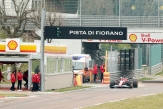
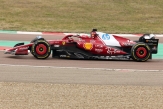
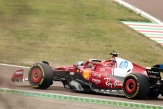

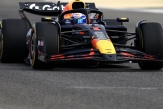
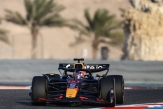
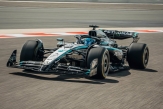
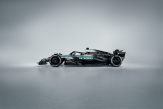
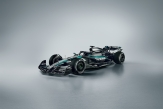


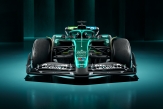
.jpg)
.jpg)
.jpg)
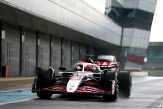
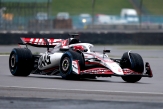
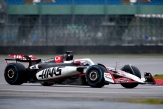
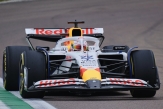
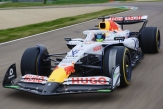



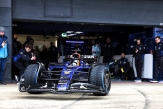
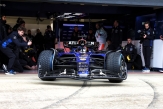


02/12/2025 от Огнян Тенчев (drJeckyll), няма коментари